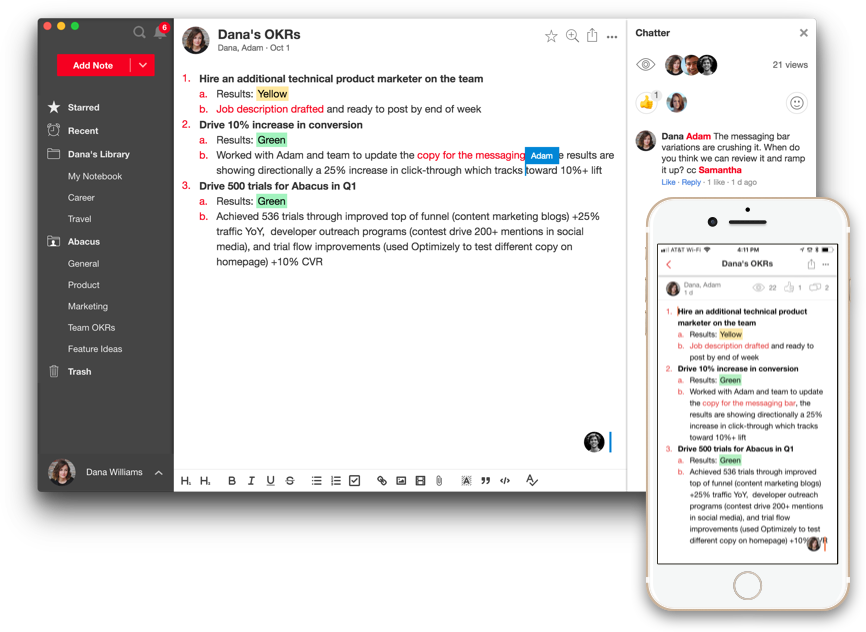Real Business Examples of SMART Goals
Part of the regular operations of businesses is setting business objectives and goals that translate into results. However, goals are less effective if they are poorly written and vague. So how do you actually put goals into practice?
Real Examples of Smart Goals for Work

Ambrosia Treatment Center
Jerry Haffey Jr., President of Business Development
Ambrosia Treatment Center uses the SMART system to continuously improve our business. Here are two examples of how we’ve used this technique to set and achieve workplace goals:
1. To help those who need it
One of our goals this upcoming year is to do more for the addiction community at large, especially those who are uninsured and unable to pay for drug and alcohol treatment. Late in 2016, we set the goal of giving away 1,500 free days in treatment. In 2017, we collaborated with several advocacy groups and industry professionals to give away 1,860 days of free treatment. Our goal for 2018 is to increase that number to 2,000.
2017 stats: 62 scholarships, 1,860 days of free treatment
2018 goals: 80 scholarships, 2,000 days of free treatment
2. To better our treatment outcomes
Another goal we set in 2016 was to partner with a University to research our treatment outcomes and evaluate our standard of care. Between 2016 and 2017, we signed on with two prestigious universities (Rutgers University and Nova Southeastern University) to study potential uses for anticonvulsants as medication-assisted treatment.
FY 2017 stats: 500 clients evaluated by 3-4 researchers
FY 2018 goals: 600+ clients evaluated by 8-10 researchers

CertaPro Painters of the South Shore and Boston
Paige NeJame, Franchise Owner
As a painting contracting firm near Boston, we use SMART goals all the time. Our goals are always SMART so that our staff knows exactly what they need to do to reach their goals.
Here’s a breakdown of each part of the goal:
S: Specific goal a for salespeople might include something like “Increase the average job size on residential painting projects by 10% by adding some add on options that a customer can choose to buy, in each quote in the next 3 months.” The more specific, the better.
M: Measuring of goals happens each Monday when we review the goal of the previous week and set the goal for the upcoming week. When we do a good job in the “S” (Specific), measuring is easy - it’s either a hit or a miss. Not a lot of gray.
A: Attainable is incredibly important because there is nothing that sucks the life out of a team that one that’s not their achieving goals.
R: Realistic is a part of “attainable” - as a manager, it’s my job to set goals that are realistic. Oftentimes people won’t have the foresight to understand what exactly they can achieve and it’s my job to set their sights either higher or lower based on my hindsight as a manager.
T: Time-phased is a part of “Specific” - the specificity of the goal should include a timeframe in which to achieve it. If you notice my example in “S” - it gives that salesperson 3 months to achieve the goal. Even with a goal of 3 months, it’s helpful to break that larger goal into weekly goals so it can be measured (“M”) on an ongoing basis. Without ongoing measurement, a manager risks that the goal-setter comes to the end of their time frame and is nowhere near the goal. By measuring in small phases, it’s much easier to recoup and adjust on the fly and make up from a bad week in the following weeks.

Power Digital Marketing
Grayson Lafrenz, CEO
SMART goals are the only types of goals. If they aren’t SMART they are just a dream or prayer. At Power Digital Marketing, we use smart goals consistency and with various cadences but two of the big cadences are our weekly goals in which every single team member sets 3 SMART goals of the most critical things to accomplish that week. On Friday at 4pm, we gather the results of those goals and each of our 6 core business departments total them up to see which had the most successful week and largest percentage of goals hit. If there is a tie, pitches are given company wide and the winning department wins $150 dollars to spend.
In addition, our President’s Club is our annual goal setting cadence where the company has 5 smart goals it has to hit. If the company hits those 5 goals it qualifies, then each team member has 5 SMART goals and if they hit them, they get to go on the President’s Club trip. Past trips have included Costa Rica, Kuai, Maui, and an upcoming Caribbean cruise! These smart goals are valuable to the individual but also the organization because if the team is hitting these goals, the company will have success.

Tomodomo
Chris Van Patten, Owner and Creative Director
In my business, we've started using SMART goal setting as a way to add structure and reduce vagueness in our planning processes. For instance, our previous projects tended to be described in vague terms — trying to improve things in sort of generic, hard-to-quantify ways like "we're going to redesign the website to improving customer experience."
Now, we rewrite that as "we're going to redesign our landing page, aiming to increase our net promoter score by 10%". This newer goal is more specific, focussed on a single action, and has a clear way to measure success.

RAIN Group
Mike Schultz, President
The idea of SMART goals has always been good. To make them work for us, the biggest revelation was to track them weekly. Tracking weekly can nearly double execution and achievement of goals.
For example, one goal we have is to generate 120 sales ready leads per quarter through marketing.
- Specific: 120
- Measurable: Count and compare against criteria
- Achievable: Last year we generated 90 or so per quarter. We added staff and built a specific plan to generate leads.
- Relevant: Leads drive sales
- Time bound: per quarter
The plan included adding staff, increasing content, increasing primary research, increasing speaking engagements online and offline, and overall driving marketplace presence. We knew what we wanted to achieve, and we did. And we’re up 33 percent in revenue in part due to stronger lead activity.

Gnatta
Rob Mead, Head of Marketing
In our marketing team, some recent examples of SMART goals include:
To achieve at least 1,000 organic views of every video we publish this quarter within 2 days of the publish date
To have achieved exec sign off on an updated nurture email journey by the end of the week
As you can see, it’s not just tactical objectives we set in a SMART manner (achieving video views) but also ensuring strategic plans progress such as improving our email journey. In both cases, because of the success/fail criteria of SMART goal setting we were driven to make sure we reached both milestones and delivered value for our business. The last bit is the key here – it’s delivering value which really makes the difference and this should be the basis of every SMART goal you set.
Notejoy makes setting and sharing Smart Goals easy
Notejoy makes it fast and easy to get your team on the same page to set SMART goals and establish them with pinned notes and templates.

- Real-Time Collaboration - As a cloud-based solution, Notejoy allows you to share your goals with internal and external collaborators. These collaborators can view, discuss, and comment on goals as well as view the latest version.
- Always in Sync - Rather than managing different versions of agendas or multiple threads of conversation, Notejoy allows the entire team to always see agendas including changes and discussions at the same time.
- Keep Goals in One Searchable Place - have one place to keep track of and maintain one system of record for your team's goals. Manage who has access to what information, and enable team members old and new to search across past and current goals.
Get started with Notejoy for free